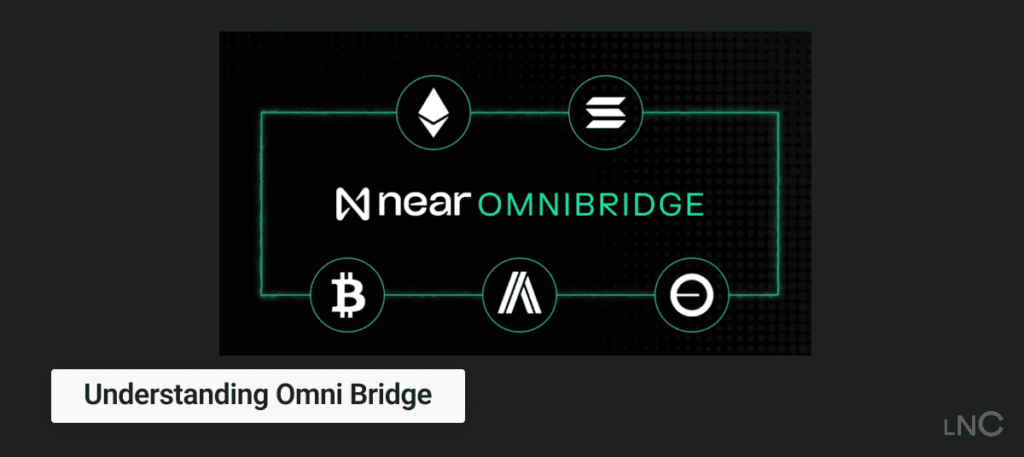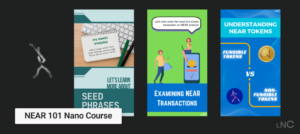In the rapidly evolving blockchain landscape, interoperability—the ability for different blockchain networks to communicate and share assets seamlessly—remains a significant challenge. NEAR Protocol’s Omni Bridge addresses this by providing a secure and efficient multi-chain asset transfer solution.
Understanding Omni Bridge
Omni Bridge is a multi-chain asset bridge developed by NEAR Protocol to facilitate secure and efficient asset transfers between various blockchain networks. It overcomes key challenges in cross-chain communication by leveraging Chain Signatures and a decentralized Multi-Party Computation (MPC) service, enabling trustless cross-chain asset transfers.
How Omni Bridge Works
Traditional cross-chain bridges often rely on light clients—smart contracts that allow one blockchain to verify events on another. However, implementing light clients can be complex and resource-intensive. Omni Bridge introduces a more streamlined approach using Chain Signatures. Instead of running light clients on each destination chain, it utilizes Chain Signatures’ MPC service to enable secure cross-chain message verification without the overhead of light client verification. This innovation reduces verification times from hours to minutes and significantly lowers gas costs across supported chains.
The core components of Omni Bridge include:
-
Deterministic Address Derivation: Every NEAR account can mathematically derive addresses on other chains through specific derivation paths, ensuring consistent control across supported chains.
-
Bridge Smart Contract: A central contract on NEAR coordinates with the MPC network to generate secure signatures for cross-chain transactions, handling token locking and signature requests for outbound transfers.
-
MPC Service: A decentralized network of nodes jointly signs transactions without reconstructing a full private key, ensuring that no single node can create valid signatures alone.
Supported Chains
Omni Bridge employs a hybrid architecture, utilizing different verification methods based on chain-specific requirements and technical constraints. This approach allows support for multiple chains from the outset, with plans to transition to full Chain Signatures integration. The initial launch includes support for:
-
Ethereum: Light client + Chain Signature
-
Bitcoin: Light client + Chain Signatures
-
Solana: Currently Wormhole, transitioning to Chain Signatures
-
Base: Currently Wormhole, transitioning to Chain SignaturesWe
-
Arbitrum: Currently Wormhole, transitioning to Chain Signatures
Implementation Details
At the heart of Omni Bridge is the Bridge Token Factory contract on NEAR, serving as both a token factory and custodian. This unified contract manages both native tokens from the source chain and bridged tokens created by the factory itself, simplifying maintenance and reducing complexity. For bridged tokens, it deploys new token contracts upon first bridging, mints tokens upon receiving valid transfer messages, and burns tokens when initiating transfers back to the origin chain. For native NEAR tokens, it acts as a custodian by locking tokens during transfers and releasing them upon receiving valid transfer messages, managing token operations through the NEP-141 standard.
Benefits of Omni Bridge
Omni Bridge offers several advantages
-
Efficiency: By reducing verification times and lowering gas costs, it enhances the speed and affordability of cross-chain transactions.
-
Security: Utilizing Chain Signatures and MPC ensures a trustless and decentralized approach to asset transfers
-
Scalability: Its hybrid architecture allows for the support of multiple blockchain networks, with the flexibility to integrate additional chains over time.
-
Simplicity: The Bridge Token Factory pattern streamlines the management of native and bridged tokens, reducing operational complexity.
Conclusion
NEAR Protocol’s Omni Bridge represents a significant advancement in blockchain interoperability, addressing the complexities of cross-chain asset transfers with a secure, efficient, and scalable solution. By leveraging innovative technologies like Chain Signatures and MPC, Omni Bridge paves the way for a more interconnected and seamless blockchain ecosystem.
For a more in-depth understanding of Omni Bridge’s functionality, you can watch the following presentation:
Updated: April 7, 2025





Omni Bridge is boosting the NEAR chain, look at NEAR intents 🙂
🧑 100% user